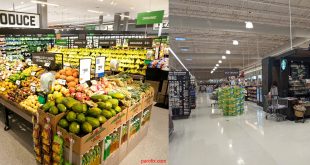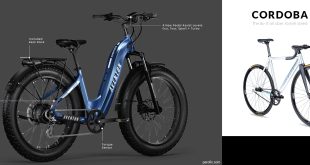Is 3D Cube the Next Puzzle Frontier?
Puzzle enthusiasts, get ready: the world of mind-bending challenges is evolving, and the 3D cube is taking center stage. From the classic Rubik’s Cube to intricate, multi-layered 3D designs, puzzle-solving is entering a new frontier. Whether you’re a beginner trying your first cube or a seasoned speedcuber, this emerging trend offers endless opportunities for mental stimulation, creativity, and even connections to sustainability through thoughtful design and materials.
What is a 3D Cube?
A 3D cube is a puzzle that extends beyond the classic 3×3 Rubik’s Cube. These cubes can have multiple layers, irregular shapes, or even electronic mechanisms that provide interactive feedback. The core concept remains the same: rotate the pieces to achieve a uniform pattern on all sides, but the complexity increases exponentially as layers and dimensions are added.
- Technical Details: Modern 3D cubes can range from 2x2x2 to 21x21x21 in complexity. They may feature magnetic mechanisms for smoother rotation, tension-adjustable screws for optimal movement, and high-precision molds to reduce friction and wear.
- Material Science: Cubes are often made from high-grade ABS plastic or carbon fiber-reinforced composites for durability. Advanced cubes may incorporate eco-friendly materials, aligning puzzle innovation with sustainable practices.
Personal Experience: My Journey into 3D Cubes
When I first tackled a 7×7 cube, I thought my hands were up for the challenge. But the experience was transformative. Each twist and turn taught me patience, problem-solving, and spatial reasoning. Moving on to shape-mod cubes—like pyramids and dodecahedrons—was like unlocking a whole new world. I remember a late-night session where I solved a mirror cube; the satisfaction of seeing uniformity emerge from chaos was unlike anything else. That’s the magic of 3D cubes: they reward persistence and strategic thinking.
Frequently Asked Questions
How do 3D cubes differ from traditional Rubik’s Cubes?
Traditional cubes typically have 3 layers and a standard color scheme. 3D cubes can feature many layers, irregular shapes, mirrored or stickerless designs, and even electronic elements. The solving strategies often involve advanced algorithms and spatial awareness rather than just memorization.
Are 3D cubes suitable for beginners?
Absolutely. While multi-layered cubes can be intimidating, beginners can start with 2×2 or 3×3 cubes to master basic algorithms. Gradually moving to larger cubes improves problem-solving skills and hand-eye coordination. Tip: Practice patience and use online tutorials or cube-solving apps for guidance.
What makes a high-quality 3D cube?
- Smooth and consistent rotation
- Durable, wear-resistant materials
- Magnetic mechanisms for alignment
- Adjustable tension for personal preference
Can solving 3D cubes improve cognitive skills?
Yes! Studies show that manipulating 3D puzzles enhances memory, attention, and spatial reasoning. Many enthusiasts report improved problem-solving abilities and even stress reduction after daily practice sessions.
Trends and Innovations in 3D Cubes
- Shape Mods: Beyond cubic shapes, puzzles like pyramids, megaminxes, and skewb cubes offer new challenges.
- Electronic Cubes: Some cubes now incorporate LEDs and timers to track speed, or even offer augmented reality guidance.
- Eco-Friendly Cubes: Manufacturers are experimenting with recycled plastics and biodegradable materials to reduce environmental impact.

Practical Tips for 3D Cube Enthusiasts
- Lubrication: Apply silicone-based lubricants sparingly for smoother rotations without damaging the mechanism.
- Tension Adjustment: Fine-tune screws to balance speed and stability, especially for larger cubes.
- Algorithm Practice: Break down complex patterns into smaller, repeatable sequences for easier solving.
- Storage: Keep your cubes in a dust-free environment to maintain performance.
Examples and Stories
One of my most memorable sessions involved a 10×10 cube. It took hours, countless mistakes, and a lot of coffee—but the feeling of aligning the last edge was surreal. I also attended a cube meet-up where enthusiasts swapped custom-designed cubes. Seeing magnetic 5×5 cubes glide smoothly and watching beginners tackle 2×2 cubes reminded me of the accessibility and excitement this hobby offers.
3D Cubes and Sustainable Practices
While puzzle-solving may seem unrelated to sustainability, high-quality 3D cubes encourage long-term use, reducing disposable purchases. Choosing cubes made from recycled materials and supporting brands focused on environmental responsibility helps align hobbies with eco-conscious values. Additionally, incorporating puzzle-solving into daily life as a mindful, screen-free activity supports sustainable mental practices.
Future Directions for 3D Cubes
- Integration with Technology: AR and AI-assisted cubes that guide users through complex algorithms.
- Modular Designs: Cubes with interchangeable layers or customizable shapes to maximize challenge and longevity.
- Global Competitions: More online and hybrid competitions could emerge, blending traditional speedcubing with creative puzzle-solving formats.
Buying Suggestions
- Start small: Begin with a 2×2 or 3×3 cube before attempting multi-layered challenges.
- Invest in quality: Look for cubes with smooth rotation, magnetic alignment, and durable materials.
- Explore diverse shapes: Shape mods and mirror cubes add variety and complexity.
- Check community reviews: Forums and YouTube channels provide firsthand feedback from experienced cubers.
Conclusion
The 3D cube represents the next frontier in puzzle-solving. With innovations in materials, design, and interactivity, it offers challenges for beginners and experts alike. Beyond the mental benefits, high-quality cubes align with sustainable practices by promoting long-term use and environmental consciousness. Whether you’re twisting your first 2×2 or mastering a 21×21 cube, the 3D cube world invites curiosity, creativity, and an endless pursuit of perfection—one turn at a time.
 Electric Bike & Bicycle Repair Hub Master DIY electric and traditional bike repairs with practical tips and trusted product recommendations.
Electric Bike & Bicycle Repair Hub Master DIY electric and traditional bike repairs with practical tips and trusted product recommendations.



